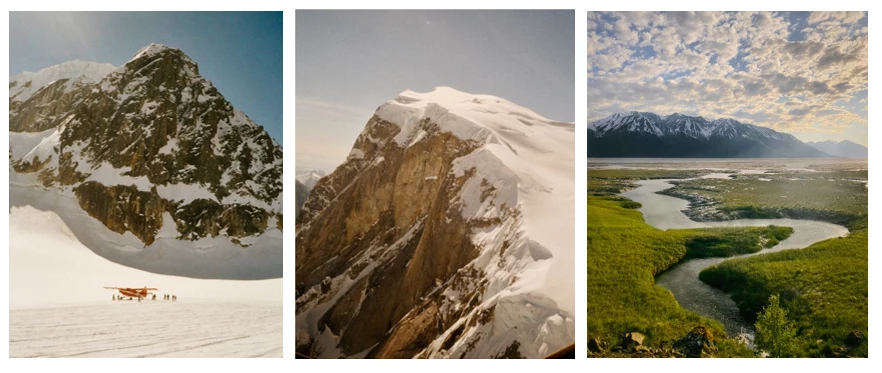Last updated: August 31, 2022
Article
Finding Inspiration in Historical Photographs
I was the artsy kid in high school – you could find me drawing, singing in the choir, and performing lead roles in all the musicals. Once college started, creating art became a back burner activity as my interests shifted in the direction of the sciences. When my fellowship program with the National Park Service led me to work at Mount Rainier National Park (MORA) Curatorial, I was excited to learn that processing and cataloging historic photographs would be one of the main projects that I could participate in. I grew up taking film photos before digital photos became popular, so I was eager to get started.
I walked into my first day at MORA Curatorial and noticed multiple vintage film cameras spread about. They were being processed that week. Processing an artifact or archive involves accessioning the item, adding it to the online park database, and finally housing it in acid-free packaging, such as an envelope or box. The film in these cameras held the history of guests visiting Mount Rainier, scientists conducting studies, and labor-intensive trail work being done by volunteers.
I walked into my first day at MORA Curatorial and noticed multiple vintage film cameras spread about. They were being processed that week. Processing an artifact or archive involves accessioning the item, adding it to the online park database, and finally housing it in acid-free packaging, such as an envelope or box. The film in these cameras held the history of guests visiting Mount Rainier, scientists conducting studies, and labor-intensive trail work being done by volunteers.

Meg McCann
National Park Service - Workforce Management Fellow
in Partnership with Northwest Youth Corps
In the last two months of working at MORA Curatorial, I have processed hundreds of film photographs, negatives, positives, and slides. Brooke, the Park Curator, and I recently worked on a collection of film photographs that Alton Lindsey, an ecologist, took during the 1930-40s. These photographs were taken all over Mount Rainier National Park to gather information about glaciers, waterfalls, and the interactions that these had with the surrounding wildlife and plant life.

Meg McCann
National Park Service - Workforce Management Fellow
in Partnership with Northwest Youth Corps
My involvement at MORA Curatorial has motivated me to take my interest in photography to the next level. I decided to purchase my very own vintage film camera so I can learn how to use it. Nature photography has always inspired me, so I’m indulging in the opportunity to explore the Pacific Northwest with my film camera. There are a few miles of trails around the offices that I’m able to explore on my lunch break – giving me the perfect opportunity to snap a few photos of mushrooms, wildflowers blooming, and the winding trails with their Douglas Fir and Western Hemlock canopies bright green with new needles. Here are a few film photos that I’ve taken in the last month with my Olympus Trip 35 -

Meg McCann
National Park Service - Workforce Management Fellow
in Partnership with Northwest Youth Corps
Without this opportunity, I don’t know if I would have been nearly as inspired to pursue film photography right now. But I’m looking forward to continuing my work at MORA Curatorial and finding out how this experience will translate into my passion for photography.
Article written by Meg McCann
for "A Day in the Life of a Fellow" Article Series
National Park Service - Workforce Management Fellow
in Partnership with Northwest Youth Corps
Article written by Meg McCann
for "A Day in the Life of a Fellow" Article Series
National Park Service - Workforce Management Fellow
in Partnership with Northwest Youth Corps
